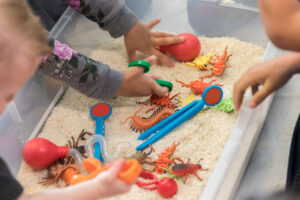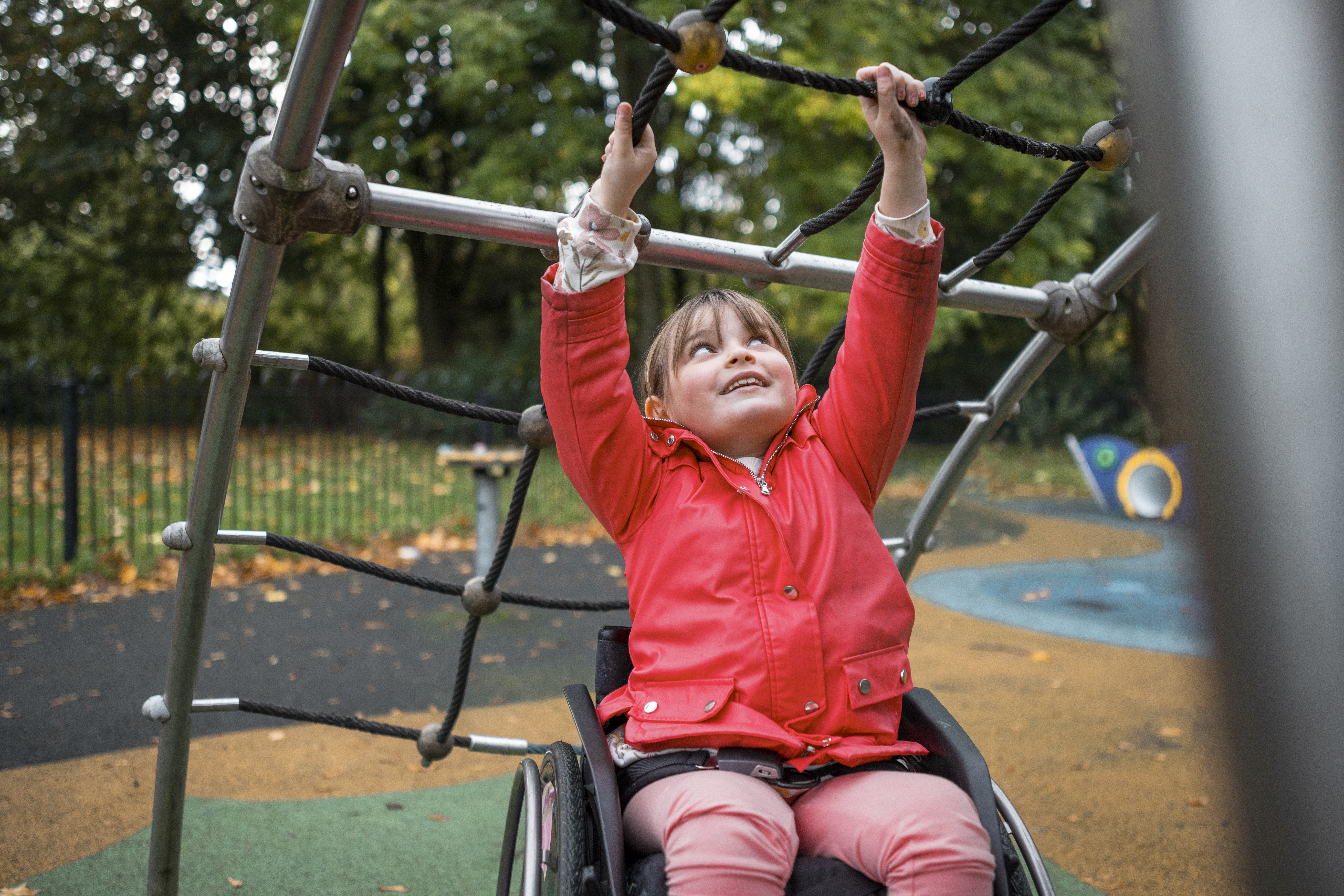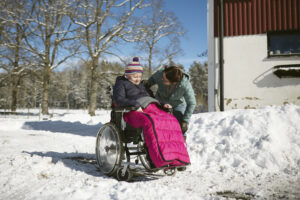As the days grow longer and the weather warms up, many parents plan summertime outings with their children. However, when you are a parent of a medically complex child, those summer plans can quickly become daunting. From medication schedules and complicated equipment to limited mobility, it can be challenging to leave home.
The good news is there are plenty of engaging and stimulating activities you and your children can do from the safety and comfort of your home and community. In this blog post, we’ll touch on six summer activities that can help make this summer unforgettable!
Why play is important
We all know that children enjoy playtime, but did you know that play plays a significant role in your child’s health and development? The American Academy of Pediatrics (AAP) reports that play improves children’s abilities to plan, organize, get along with others and regulate emotions. It also helps with language, math and social skills and mitigates stress.
Playtime is especially important for children with medical complexities who may not have as many opportunities to socialize and can be under increased stress because of their condition.
Engaging summer activities
Planning fun activities for your child can be stressful, but there are many free or low-cost activities that you and your child can take part in this summer. Here are a few:
1. Build a sensory tray
Sensory trays, or bins, are containers with materials that stimulate a child’s senses. Sensory trays allow children to explore textures and scents while learning about the world around them and engaging with their parents. They also allow medically complex children to explore environme
Beach theme:
Add sand, smooth stones or beads, green felt, seashells, sand molds and plastic marine animals to your sensory tray. If you use a container with a separate compartment, you can add water to create a beach effect.
Outdoors theme:
Add leaves, grass, twigs, rocks, and flowers to your container to create an outdoors-themed tray. Jamie Brown, a teacher who works with children with multiple disabilities and visual impairments, recommends finding several different types of each object, leaves from different trees, different color rocks, different species of flowers, etc., so your child can compare and contrast the objects.
2. Make a splash
Playing in the water is a great way to cool off and have fun during long summer days, but swimming and other water sports are often risky for fragile children. Luckily, there are accessible alternatives like sprinklers and splash pads.
Neighborhood splash pads often have activities that are accessible to everyone, including those with disabilities. To avoid crowds, visit during off-peak hours or inquire about specific hours for disabled children. If splash pads aren’t available nearby, you can still have fun by running a sprinkler in your yard or playing with a water hose.
Splashing around in the water allows for hours of fun, and if you choose to play at home, you won’t have to worry about missing essential meal or medication times. Remember to cover any abrasions, lines and ports with waterproof dressings before getting wet.
3. Play in the backyard
Did you know that spending time in nature can have multiple benefits for children? It provides them with much-needed Vitamin D and helps reduce anxiety and stress while encouraging them to explore and learn about the world around them.
If you have a backyard, consider getting your child outside. There are so many activities they can engage in right in your backyard. One popular and educational option is gardening. It teaches children about plants and growing cycles and allows them to grow their own fruits and vegetables. Just remember to dress them in protective clothing to avoid getting dirt in any wounds or ports.
If gardening is too intense for your child, they can still get outside and enjoy nature. Sitting outside on a blanket and engaging in conversation, listening to music, or reading a book can provide the benefits of being in nature. You could also consider having a picnic or observing birds and clouds together.
4. Go for a walk or visit a playground
Going for a walk or visiting a playground is another great way for your child to engage in nature. Opt for flat paths to ensure a smooth journey for your little one and start with shorter trips to gauge their response. If walking isn’t an option, try using a stroller or wheelchair, or let them ride in a bike trailer.
Visiting the playground is a popular summer activity. Some communities have accessible or inclusive playgrounds with soft surfaces, wheelchair-accessible equipment and other amenities for your child to enjoy. Check out this playground directory to see accessible parks near you.
5. Do an art project
Art projects have a reputation for being super messy and difficult to manage; however, it is easy to do entertaining projects with little mess. Jamie Brown suggests using a modeling compound, like Play-doh, and adding scents such as peppermint, cinnamon or vanilla to enhance the sensory experience. Your child can have fun creating different shapes or using it for imaginative play.
Another great low-mess art project is marble painting. All you need is a shallow box, construction paper, a few marbles, and watered-down paint. Place the paper in the box, add the marbles and paint, and let your child roll them around to create beautiful artwork. It’s a fun and clean way to explore their creativity.
6. Read books or play music
Immerse your children in the world of imagination with books and music. These activities stimulate their minds and provide an excellent opportunity for parents and siblings to bond. Discover age-appropriate books at your local library or explore interactive story options with apps like Bookster, Tales2Go, or TouchyBooks. Make story time exciting by inviting older siblings to join in and bring the characters to life. You can even find videos on YouTube where authors or narrators read books aloud.
Customize music activities to suit your child’s age and interests. Older children may enjoy listening to their favorite artists while completing other tasks. For younger ones, let them explore their musical talents with small drums, bells or rain sticks. Boost the fun and creativity by joining in or inviting other children for a jam session. If your child is easily overstimulated, consider using fewer instruments or keeping the playtime shorter.
As you can see, there are many options for a fun and fulfilling summer with your medically complex child. Whether you are participating in activities at home or in your community, remember that play is essential for your child’s development.
Maxim Healthcare Services understands the unique needs of families caring for fragile children. Our nurses and caregivers support your child’s health and help them participate in activities. Visit our pediatrics page to learn more about our services, and contact your local Maxim office for more information.



